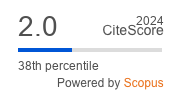Neoadjuvant Chemotherapy for Breast Cancer: Moving Beyond Pathological Complete Response in the Molecular Age
DOI:
https://doi.org/10.5644/ama2006-124.328Keywords:
Breast Cancer, Neoadjuvant Therapy, Staging, Grading ResponseAbstract
This review focuses on neoadjuvant chemotherapy for breast cancer which introduces practical issues for pathologists, including predicting response, optimising specimen handling, size measurement and assessment of residual disease, and recent advances in management of the axilla. The role of neoadjuvant chemotherapy in breast cancer is increasing, and it has become standard of care for high risk Human Epidermal Growth Factor Receptor 2 positive and triple negative breast cancers. The benefits of the neoadjuvant approach extend beyond pathological complete response to tumour downstaging permitting conservative surgi- cal options in the breast and axilla, and assessment of response provides valuable prognostic information to enable escalation and de-escalation of adjuvant therapy to optimise oncological outcomes. Hence histopathologists play a vital role in patient management in the neoadjuvant setting. Optimal patient selection for neoadjuvant chemotherapy requires consideration of pre- treatment histopathological and molecular tumour characteristics. Post chemotherapy, tumour staging can be challenging, and changes in criteria for measurement of primary tumour and metastases in the 7th and 8th editions of the TNM have led to confu- sion amongst pathologists. This review offers practical guidance on specimen handling and measurement of lesion size. Mov- ing forwards more detailed information on degree of response will be required for adjuvant therapy decision making, and the Residual Cancer Burden is emerging as the preferred method for quantifying residual disease not just within clinical trials but in routine practice. Recent advances in management of the axilla are discussed, including the significance of minimal residual disease in the form of isolated tumour cells and micrometastases which portend a worse prognosis in the neoadjuvant setting.
Conclusion. Neoadjuvant chemotherapy now forms part of routine breast cancer management, and detailed histopathological assessment and an understanding of the importance of molecular tumour biology is essential for clinical decision making.
Downloads
Published
Issue
Section
License
Copyright (c) 2021 Elena Provenzano

This work is licensed under a Creative Commons Attribution-NonCommercial 4.0 International License.





